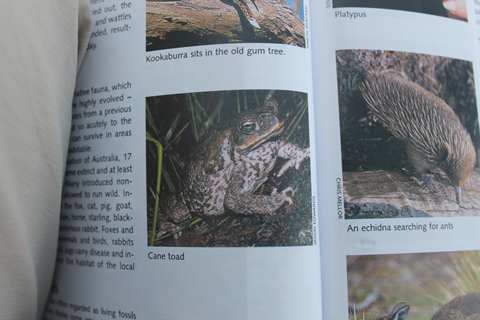6th Jan 2011, Cairns, Sugar and the Cane Toad

Glenoverland
Fri 6 Jan 2012 11:07
|
From Cairns southwards the coastal plain is Australia’s biggest sugar cane
producer, exporting sugar to much of south east Asia, NZ & USA. The
cut cane is transported by narrow gauge railway, much of which runs alongside
the highway, and still has some steam engines.
The cane industry started in the early 1800s and needed labour. Once
the convict supply ran out, they turned to the Polynesians, who were thought to
be tough enough for the backbreaking work of cane cutting. Cutters were
brought in as indentured workers for 3 yrs, though they couldn’t read the
contract they had to put their thumb print on. They worked in harsh
conditions with a diet of “damper and syrup”, very little medical care, and low
wages. But the Polynesians enjoyed possessions, and many went home
with a pocket watch, rolls of cloth, fancy clothing, knives and tools.
With the beginning of the White Australia policy,. 8000 of the 9000 odd
Polynesians were sent home. Of those allowed to stay, few could continue
to work because the unions stopped them.
The industry is now highly mechanised and efficient, and prides itself on
its green policies. The cane leaves used to be burned before the storks
were cut; now the leaves are shredded and put back on the land, and the leafless
canes are cut to go for crushing and processing into sugar.
It is amazing driving through this country – miles of bright green
canefields edged by the narrow gauge railway, meeting the sea on one side and
sheer, rainforest peaks of the Great Dividing Range rising into the clouds on
the other. Nobody seems to swim in the sea here, except in enclosures;
these idyllic waters are infested with marine stingers, which can be fatal, and
saltwater crocs.
Cane toads – were introduced in 1935 from South
America to control the cane beetle, which was decimating the crop, and the
growers were desperate. UNFORTUNATELY, the adult beetles were too high on
the plant, or in flight, and the toads couldn’t eat them. But they did eat
just about everything else. Also, they have poison glands, so birds, snake
and mammal predators eating them died. The birds learned to eat just the
good bits. But many snakes and small carnivorous mammals hav e been
decimated; the toads are thriving and gradually spreading south in their march
towards nsw, and west to n.t. and w.a.
Bizarrely, there is a project going on to educate some of the small
mammals.They breed captive populations and give them raw cane toad sausages (not
in the supermarkets yet) which have been doctored to make them unpleasant.
The hope is that, on release, these little carnivores will avoid cane toads and
so survive, and teach their children to do the same! Fingers
crossed. |
